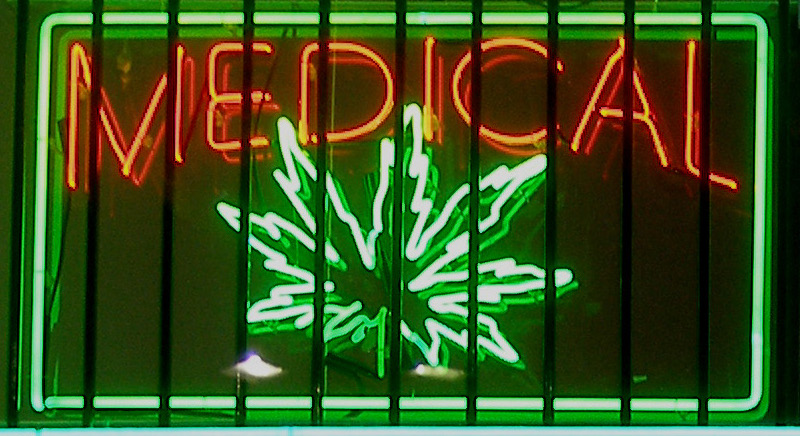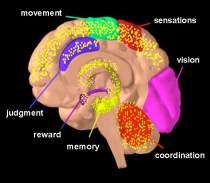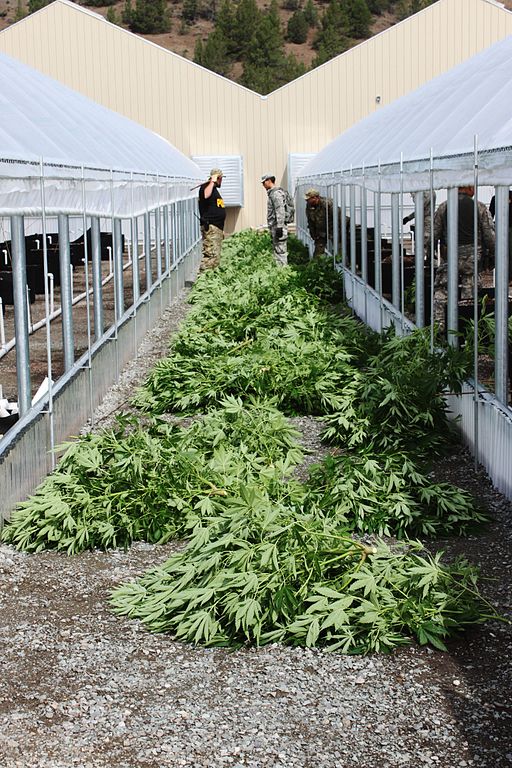
Medical Marijuana: Current Scientific Basis 2018 – Part I
WHAT IS MEDICAL MARIJUANA?
That might be a moot question in a place like California, but I don’t live in a blue state. I live in a red state without laws that legalize medical marijuana. Because some of my regular audience lives where I do, we’ll first define some terms and explain some concepts. I find that a lot of conservative-state folks are not familiar with what the medical marijuana thing is really about.
This is part one of a two part series. Today we look at what medical marijuana is and isn’t. We will also look at how the federal government has regulated research on cannabis. Then, having laid the ground work, we will delve into actual scientific results next week.
Medical Marijuana Defined
According to the U. S. government, the term medical marijuana refers to using marijuana or its extracts to treat symptoms or causes of illness.
- Defining the term does not imply approval. At this time, the federal government doesn’t approve of this practice.
- The U.S. Food and Drug Administration (FDA) does not recognize or approve marijuana as medicine. The cannabis plant and its direct derivatives remain a Schedule I agent. That means it is legally classified as:
- “a drug with a high potential for abuse, and no currently accepted medical use.”
Cannabinoids
“Medical marijuana” includes more than just the cannabis plant itself. It also includes substances derived from the plant. These derivatives are often labeled as cannabinoids. This usage is actually a slight misuse of the term. Initially, in the medical literature, cannabinoid referred to the distinct biochemicals isolated from cannabis. When you read that there are more than a hundred biologically-active cannabinoids, this is an example of the original use of the term.
In the politicized language of drug policy, the term cannabinoid has expanded over the last two decades. Its current usage also includes substances like cannabis-resin extracts. In addition, compounds of more than one cannabis biochemical such as THC+CBD capsules are also called cannabinoids. This latter usage treats the term as a catch-all for anything extracted from the plant.
Cannabinoids Used in Medical Studies
The following is a brief list of some of the important medical-marijuana cannabinoids. This list covers the ones used in the medical studies surveyed in part II:
- THC. The main ingredient in marijuana is delta-9-tetrahydrocannabinol, better known as THC. This is the stuff than makes people “high.”

- CBD. This is an acronym for the cannabis-derived biochemical cannabidiol. Unlike THC, it has no intoxicating effects.
- It is used in Epidiolex, a prescription drug legal in the UK for the treatment of certain seizure disorders. Currently, Epidiolex is in clinical trials in the United States for the treatment of two severe forms of childhood epilepsy, Dravet syndrome and Lennox-Gastaut syndrome.
- CBD is sold in various forms as an unregulated supplement. This practice occurs in some states like Colorado which have liberal medical-use laws or have legalized recreational use.
- THC Capsules, CBD Capsules, and THC/CBD Capsules. These are capsules sold by some medical marijuana dispensaries. They are made by concentrating THC and/or CBD into an oil. The oil is then put into a standard gelatin capsule and sold. The dose and content of different capsule brands are variable.
Cannabinoids Not Included in Clinical Studies
These are important. The cannabinoids which are not studied form a large portion of what is sold as medical marijuana. Because they are not studied, claims of their medical benefits stand on questionable ground.
- Cannabis Concentrates. There are numerous ways to concentrate THC, CBD and other cannabinoids out of a cannabis plant. The different methods result in different products. All of them, though, share one property: they take the bioactive chemicals out of the plant and concentrate them in an edible, inhalable, or absorbable form.
- Hash is a concentrate made by collecting and compressing of the resin and/or powdery kief (resin glands) from the cannabis plant.
- BHO stands for butane hash oil. Cannabinoids are stripped from the plant through butane extraction. The product left behind is a waxy substance that will harden into cannabis “wax,” the glasslike “shatter” or the crumbly “honeycomb.” When these BHO concentrates are heated on a nail head or other hot metal and then inhaled, they are sometimes called “daps.“
- CO2 Oil is made by subjecting a cannabis plant to a pressured extraction process using carbon dioxide. The extract is an oil. The oil is commonly mixed with polypropylene glycol and loaded into a vape pen. The pen vaporizes the CO2 oil-polypropylene glycol mixture which is then inhaled.
- RSO is Rick Simpson oil. Back in 2003, the Canadian Simpson made an oily cannabis extract by soaking cannabis in either light aliphatic naphtha or 99% isopropyl alcohol. He then concentrated the resulting amber-colored extract. He used the extract as a topical on his skin cancer which surgery had failed to eradicate. Simpson claims the topical application cured his cancer. People have since used RSO topically or orally in hopes of treating cancer and other ailments.
- Cannabis Tincture is made by extracting cannabinoids from cannabis plants with alcohol. Before they were banned in 1937, tinctures were the most popular form of cannabis-derived drugs.
FDA-Approved Cannabinoid Drugs
- Dronabinol. This is a Schedule II FDA-approved drug used to treat nausea caused by chemotherapy.
- Dronabinol is synthetic THC. In prescription form, it is marketed as the branded drugs Marinol™ and Sybdros™.
- Nabilone. This is a Schedule III FDA-approved drug, also used to treat the GI-distress symptoms of chemotherapy.
- Nabilone is a synthetic cannabinoid with a structure similar to THC. It is sold as the branded medicine Cesamet™.
- Nabiximols is sold in Canada, the UK and several European countries as the branded drug Sativex®.
- Nabiximols is a 1:1 mix of THC and CBD.
- It treats muscle control problems caused by multiple sclerosis.
- It is not approved by the FDA for use in the United States.
Commercially-Available Medical Marijuana Products
Medical marijuana businesses offer a wide variety of products:
- cannabis for smoking
- edible cannabis in chocolate or baked goods
- cannabis concentrates in vape pens
- cannabis concentrates for inhalation through dabbing
- THC, CBD and THC/CBD capsules
- cannabis tinctures
Medical marijuana businesses do not sell FDA-approved cannabinoid drugs. These drugs, listed above, have gone through the rigorous clinical trials required in the United States. You may not be aware of this but the bar for drug approval is higher in the USA than in a lot of other countries. Drug approval here takes longer than in many other places. Nothing sold in a medical marijuana dispensary has federal approval either as a prescription or as an over-the-counter drug.
THE GAP BETWEEN MEDICAL MARIJUANA AND NIDA-APPROVED CLINICAL TRIALS
The National Institute on Drug Abuse (NIDA) has a stranglehold on what clinical trials can use for research on cannabis and cannabinoids. Until 2016, clinical trials in the USA could only use:
- synthetic cannabinoids
- prescription drugs approved for treatments in other countries
- a limited amount of low-potency cannabis grown at the NIDA-approved facility at the University of Mississippi
While the amount of cannabis available for research was recently increased, the impediments are still profound. The quality of cannabis available for medical study is currently inferior to the cannabis available from any medical marijuana business. The THC-potency of modern illicit marijuana is higher than in the past. The cannabis available for research is grown from a less-potent strain from decades ago.
Research studies are constrained to use cannabis and plant-derived cannabinoids that are not at all equivalent to what is sold in medical marijuana businesses. This undermines the validity of correlations between research results and the potential effects of medical marijuana products.
Regulatory Barriers to Research
In addition to the restriction in materials, any clinical study that wants to use cannabis or cannabinoids has additional barriers to overcome. Because marijuana and its derivatives are Schedule I drugs, there are also four additional regulatory agencies’ worth of hoops to jump through. These requirements are in addition to the already-stiff FDA requirements. Not only is much more paperwork required for approval, cannabis-related research takes years longer than for any other class of drugs.
Regulatory barriers to medical studies are a large part of the disconnect between scientific research results on cannabis and the potential effects of medical marijuana.
Interested readers may want to consult the 2017 report by the National Academy of Science on medical marijuana. It has an excellent and detailed description of the problems introduced for cannabis research by the government’s policies.
Next week, we will go into detail on what scientific studies have to say about medical marijuana use. It may surprise you. It certainly surprised me.

SOURCES
- National Academy of Sciences, The Health Effects of Cannabis and Cannabinoids The Current State of Evidence and Recommendations for Research, 2017, ISBN 978-0-309-45304-2, http://nap.edu/24625
- National Academy of Sciences, Marijuana and Medicine: Assessing the Science Base, 1999, ISBN 978-0-309-07155-0, http://nap.edu/6376
- https://www.drugabuse.gov/publications/drugfacts/marijuana-medicine
- https://www.drugabuse.gov/publications/drugfacts/marijuana
- https://www.drugabuse.gov/publications/marijuana/marijuana-safe-effective-medicine
- https://www.cancer.gov/about-cancer/treatment/cam/hp/cannabis-pdq#section/_3
- https://nccih.nih.gov/health/marijuana
- ClinicalTrials.gov: NCT02102230, NCT02874898, NCT02517424, NCT02759185.
- https://nihrecord.nih.gov/newsletters/2014/08_15_2014/story1.htm
Today’s banner image is cropped from a photo by Laurie Avocado, 2008, CC BY 2.0 via Wikimedia Commons.

One thought on “Medical Marijuana: Current Scientific Basis 2018 – Part I”